India’s IPO market is red hot with back to back public offers and although not every IPO is making money, investors have a lot to choose from. The latest in line is HDFC Standard Life Insurance IPO which opens for subscription on 7 November 2017. The offer, priced in the range of INR275 – 290 per share, aims to mobilize as much as INR8,695 crore by selling 299,827,818 shares. All the shares will be offered by existing shareholders, valuing the firm at nearly INR58,277.5 crore at the upper end of the price band. While the HDFC group has a solid reputation, it remains to be seen if the offer manages to reward IPO investors which haven’t made money so far from offers of insurance companies. Through HDFC Life IPO review, we try to find out if the company’s valuation leaves something on the table for investors.
HDFC Standard Life Insurance IPO details | |
| Subscription Dates | 7 – 9 November 2017 |
| Price Band | INR275 – 290 per share |
| Fresh issue | Nil |
| Offer For Sale | 299,827,818 shares (INR8,245.26 – 8,695 crore) |
| Total IPO size | 299,827,818 shares (INR8,245.26 – 8,695 crore) |
| Minimum bid (lot size) | 50 shares |
| Face Value | INR10 per share |
| Retail Allocation | 35% |
| Listing On | NSE, BSE |
HDFC Life IPO review: HDFC, Standard Life to pare stake
As mentioned above, there are no fresh shares in the IPO and the offer is purely to facilitate monetization of existing shareholders’ stakes. HDFC holds 61.21% in the third-largest private sector life insurance company while Standard Life Mauritius owns 34.75% equity stake. Azim Premji Trust also holds 18,951,361 shares or 0.94% stake in the company.
Following the IPO, the shareholding of HDFC and Standard Life Mauritius will reduce to 51.69% and 29.35%, respectively. The domestic financial institution plans to sell 191,246,050 shares while Standard Life Mauritius plans to offload 108,581,768 shares. Average cost of acquisition of HDFC and Standard Life is INR10.71 and INR41.79 per share, respectively which means that both will reap multifold returns.
HDFC Life IPO review: Early mover and HDFC parentage
HDFC Standard Life was the first private life insurer to obtain registration from the IRDAI in 2001 after the market was opened for private players. Within two years, the company crossed 100,000 policies and 10,000 individual agents through distribution tie-ups. As of 30 September 2017, HDFC Standard Life had 66,372 individual agents and bancassurance partnership with 125 entities including banks, non-banking financial companies, micro-finance institutions and small finance banks. In addition, it has its own nationwide network of 414 branches and spokes. This is the most important distribution channel and generated 50.7% of total new business premiums during FY2017.
Thanks to the strong parentage of HDFC group and the bancassurance relationship with HDFC Bank, the life insurance player HDFC Standard Life has been among the top three private life insurers in recent years in terms of total new business premium. In fact, it improved its share of new business premium increased from 15.8% in FY2015 to 17.2% in FY2017.
HDFC Life IPO review: Among the most-profitable
As the table below indicates, the company has been growing its revenues at a solid pace and has already more than doubled the topline from FY2013. In line with the soaring topline, the company’s earnings have also kept pace. From INR447.7 crore in FY2013, the company’s earnings in FY2017 grew at INR892.1 crore. Its VNB (Value of New Business) margin improved from 18.5% in FY2015 to 22% in FY2017, as a result of better cost efficiencies, persistency ratios and selling a balanced product mix. The last bit is where HDFC Life is ahead of its competitors. While ICICI Prudential is still focused on low-margin ULIPs, HDFC Standard Life’s product mix is nearly 53% in favour of non-linked products.
Another aspect to look at is the growing share of protection plans (term and health insurance) in the company’s product mix. Its share of protection in new business premium increased from 12% in FY2015 to 21.8% in FY2017. The company had Return on Equity (RoE) of 25.6%, Return on Invested Capital (RoIC) of 40.7% and Operating Return on Embedded Value (RoEV) of 21.7% during FY2017.
HDFC Standard Life’s financial performance (in INR crore) | ||||||
| FY2013 | FY2014 | FY2015 | FY2016 | FY2017 | H1 FY2018 | |
| Premium earned | 14,016.3 | 17,290.7 | 27,090.6 | 18,066.5 | 30,554.4 | 14,415.0 |
| Profit after tax | 447.7 | 725.3 | 785.5 | 818.4 | 892.1 | 554.9 |
| EPS (INR) | 2.24 | 3.64 | 3.93 | 4.10 | 4.44 | 2.80 |
HDFC Life IPO review: Should you invest?
To say that insurance penetration in India is less than the global average would be obvious. This contrasts with a high penetration in vehicle insurance and regulations have played a great role in ensuring low insurance in the country. Forget about the global life insurance penetration benchmark of 3.5% of GDP, our market lags even some of Asian peers like Thailand (3.7%), Singapore (5.5%) and South Korea (7.4%) with corresponding figure of just 2.7% in 2016. Another characteristic of the local market is the amazing amount of historic misselling in favour of endowment plans which means that we even lag developing markets in terms of protection provided by insurance. Both these points are being addressed by the insurance players as well as buyers and it simply means that the overall insurance pie is going to grow substantially in the coming years and decades.
Coming to HDFC Standard Life, the company boasts of a strong balance sheet and as described above, solid profitability. It had a solvency ratio of 200.5% as of 30 September 2017, above the minimum 150% solvency ratio required under IRDAI regulations. Its Operating Return on Embedded Value (RoEV) of 21.7% is among the best in the industry, although behind 23% for SBI Life but comfortably ahead of 16.5% for ICICI Prudential.
However, as with most other recent IPOs, HDFC Life IPO is priced to perfection. Its price band of INR275 – 290 per share values the business at a Price/Earnings (P/E) ratio of 62.50 – 65.91. This is much higher than 33.4 for ICICI Prudential and closer to 69.4 of SBI Life. Return on Net Worth (RoNW) of 25.6% is better than SBI Life (18.6%) but trails ICICI Prudential (28.7%). Its Net Asset Value (NAV) of INR19.1 per share translates into a Price/Book Value ratio of 15.2 which is higher than 8.7 for ICICI Prudential and 11.6 for SBI Life. Its Price/Enterprise Value (P/EV) value of 4.1 is higher than ICICI Prudential (3.74) but slightly less than SBI life (4.24).
Now, HDFC Standard Life deserves some premium for its superior quality of earnings, especially over ICICI Prudential. However, it appears the IPO is priced similar to SBI Life which continues to trend lower after a marginally positive listing. With the outlook of insurance sector being bright, HDFC Standard Life is well-positioned to enjoy years of strong growth and enhanced profitability. At the same time, HDFC Life IPO review tells us that these tailwinds are already factored in the offer price. As such, it may only be an option for investors with high risk appetite. The markets are looking stretched and it may be the worst time to go for fully-priced quality stuff!










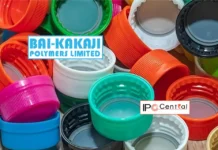




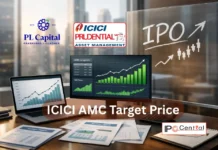





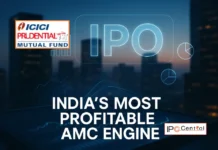

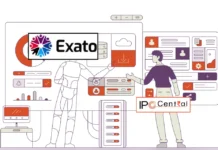











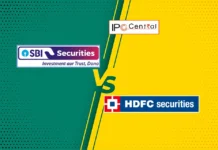
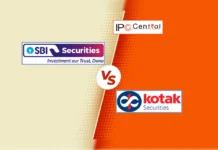


Invest only if you can hold from long term perspective. over priced 🙁
I can’t say but price are comfortable compare to SBI Life